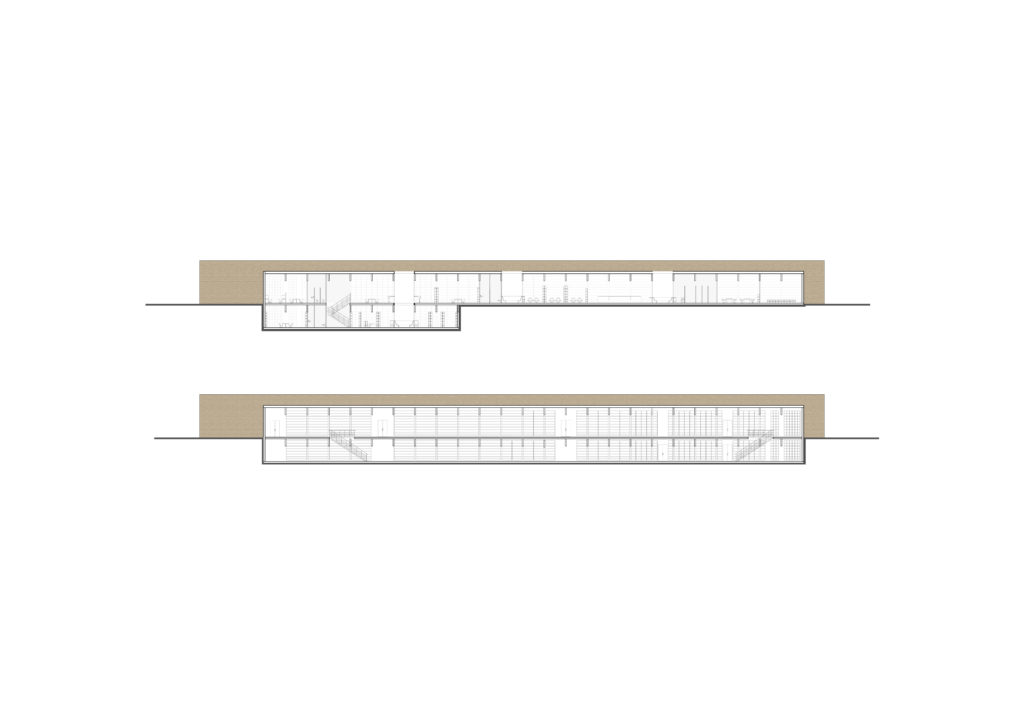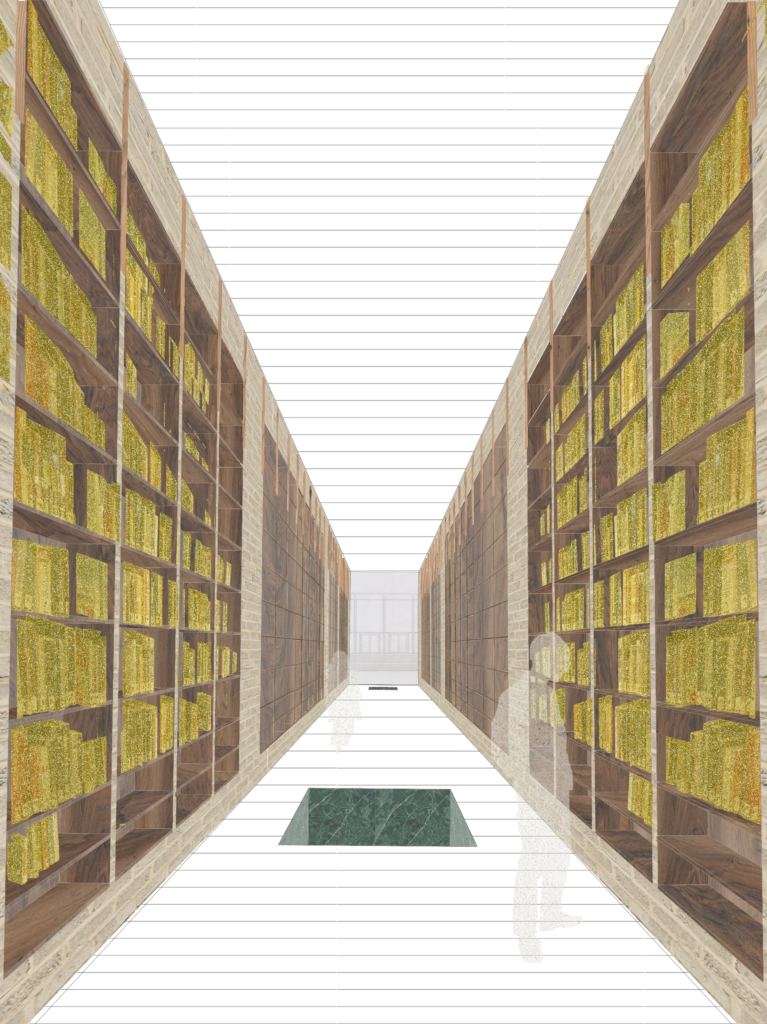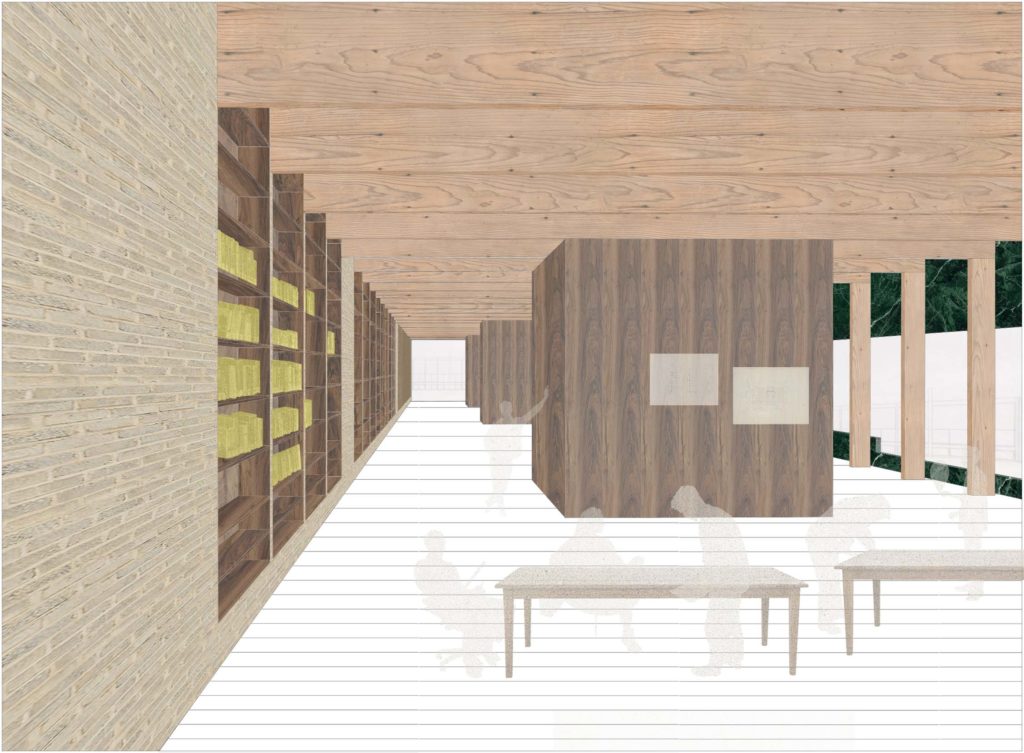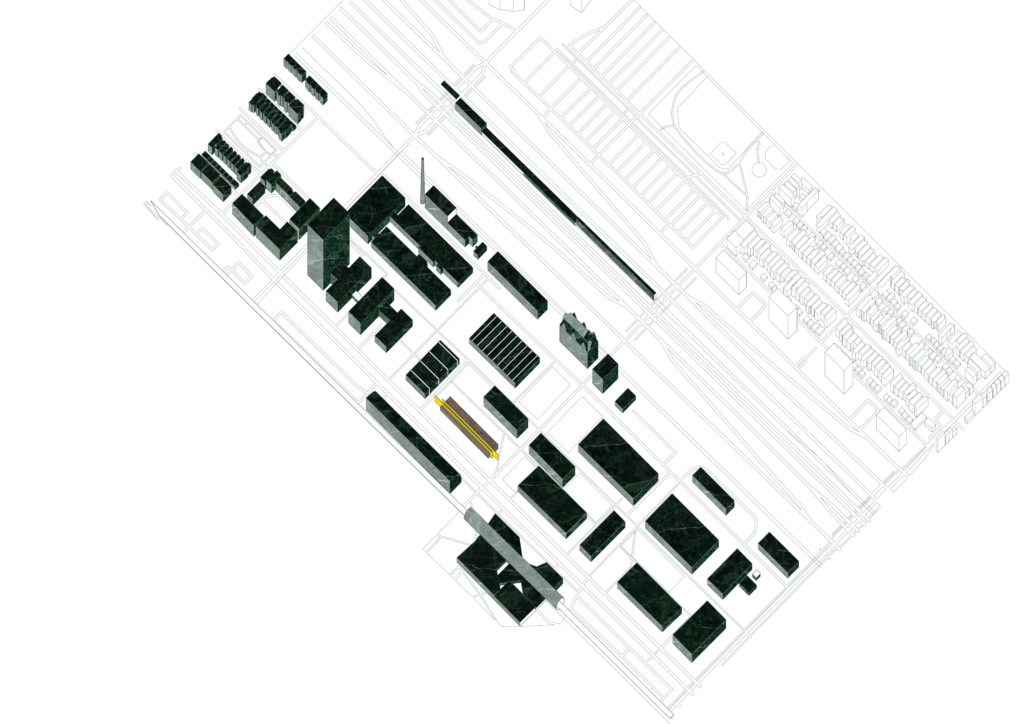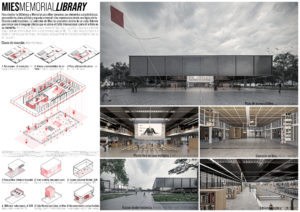“Architecture is the will of an epoch translated into space”
- Mies van der Rohe
The memorial Library in honor of Mies van der Rohe is our translation of library and monumental architecture in the century of today and beyond. Mies’s contemporary, yet far-forward design principles form the structural basis.
The twenty-first century is, on the one hand, the age of digital technology, consumption and globalization that distances people from the here and now. On the other hand, the societal problems of this century such as the climate crisis, polarization and social inequality require solutions to bring people closer to each other and their environment. These are ongoing processes that call for deliberate decisions in architectural designs to make a building an accommodation for its respective users and a future-proof existence. To achieve this, three questions were examined and assembled.
First, what is the building’s purpose? It is the home of the work of Mies van der Rohe, a progressive modern architect with many buildings, studies and works of art to his name. It is not only a memorial to him, but also an archive, a place of knowledge and even an art exhibition space. The library will be a place to gader, to focus and to create new knowledge.
Second, what constitutes the context of the project? The design is located on the IIT Chicago campus, a Technical University with a strong focus on future innovations and developments in both engineering, design and business. Zooming in further, it is part of the architectural faculty where Mies left a mark on the curriculum and study methods. The physical context is characterized by Mies van der Rohe’s campus design with its recurring grid of 24 feet, clear constructions, coordinated material use, open floor plans, and connecting parks and pathways. The strong stamp of Mies van der Rohe is interspersed with an architectural expression by other architects, nevertheless, in which the influence of Mies’s principles of Mies van der Rohe are visible.
Third, Who are the users and what are their expectations of an appropriate memorial library for Mies van der Rohe at the IIT Campus? With the library located at the IIT campus in between the CrownHall, the architecture faculty, and the Paul V. library, it will mostly be architectural students and professors, other architecturally engaged people and students from different IIT faculties that will visit the library. This seems an explicit group, however every student and architecture interested differs and might have different perspectives on the building. To get an overview of the different wishes, a survey was conducted by means of a questionnaire. The variety of wishes, expectations and requirements was infinite.
So, to respect Mies van der Rohe his work and design principles, connect with the IIT context and fulfill the wishes of the diverse users and to design a Contemporary library, The desire arises to design a memorial library where diversity forms the core, facilitated by a clear axis and construction that leads everyone to its desired destination.
The analysis of the input; the architecture of Mies van der Rohe, context and society have led to two main qualities that have to be achieved within the design. Variation and fluidity. In order to reach this goal, three design elements have the main focus: (asymmetrical) axis, diversity in rooms and a logical interconnection of functions. These elements can all be linked towards the use of two walls, around which the building formulated. The walls are the main formal elements and provide a simple architecture design built upon a clear grid.
The wall is the axis of the building. It contains the main function of the building, which is the storage of the collection of Mies van der Rohe. Besides, it contains the main flow of the building. The two main entrances are positioned within the wall and will lead the users from the north to the south – from the campus to the Crown Hall – or vice versa. This makes the routing of the building very simple and improves the fluidity and the continuity between indoors and outdoors. By positioning the wall as an asymmetrical axis, the building naturally divides into two different sections. The narrow section on the east side and the wider section on the west side. This leads to a diversity in spaces. Smaller and more private spaces on one side and bigger and more open spaces on the other side. This together with a strong interconnection of rooms, from open and public in the north to closed and private in the south, leads to a building with a great diversity of spaces and a clear and strongly visible fluidity.
Furthermore, by using a cellar and the ground level, the diversity and fluidity is enhanced. A cellar is innate as a more private and closed space, perfect for the closed collection of Mies van der Rohe and the related research stations. The ground level, clearly visible from outside because of the extensive use of glass, gives a more public and open feeling which corresponds with the open collection of Mies van der Rohe. The wall that is pulled through from ground level to the cellar, provides a good fluidity between the open and closed collection and related workspaces.


